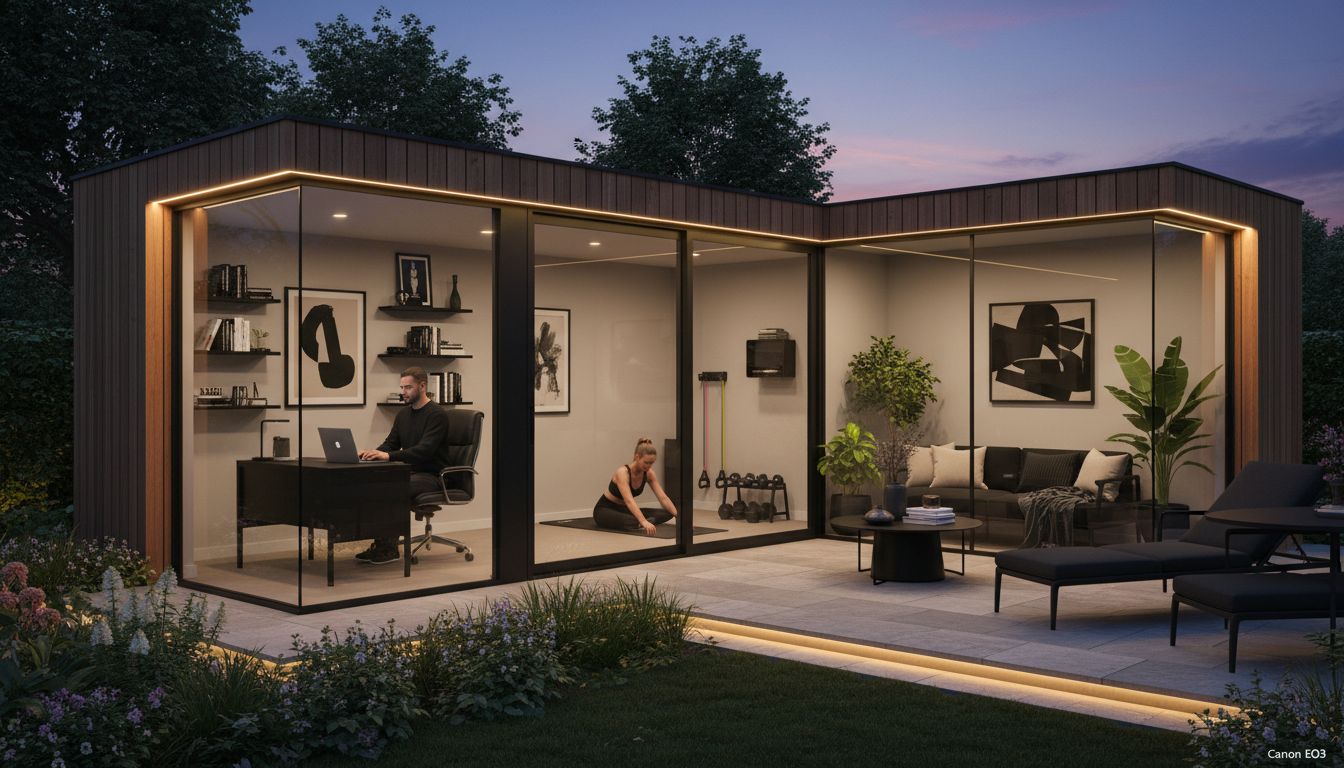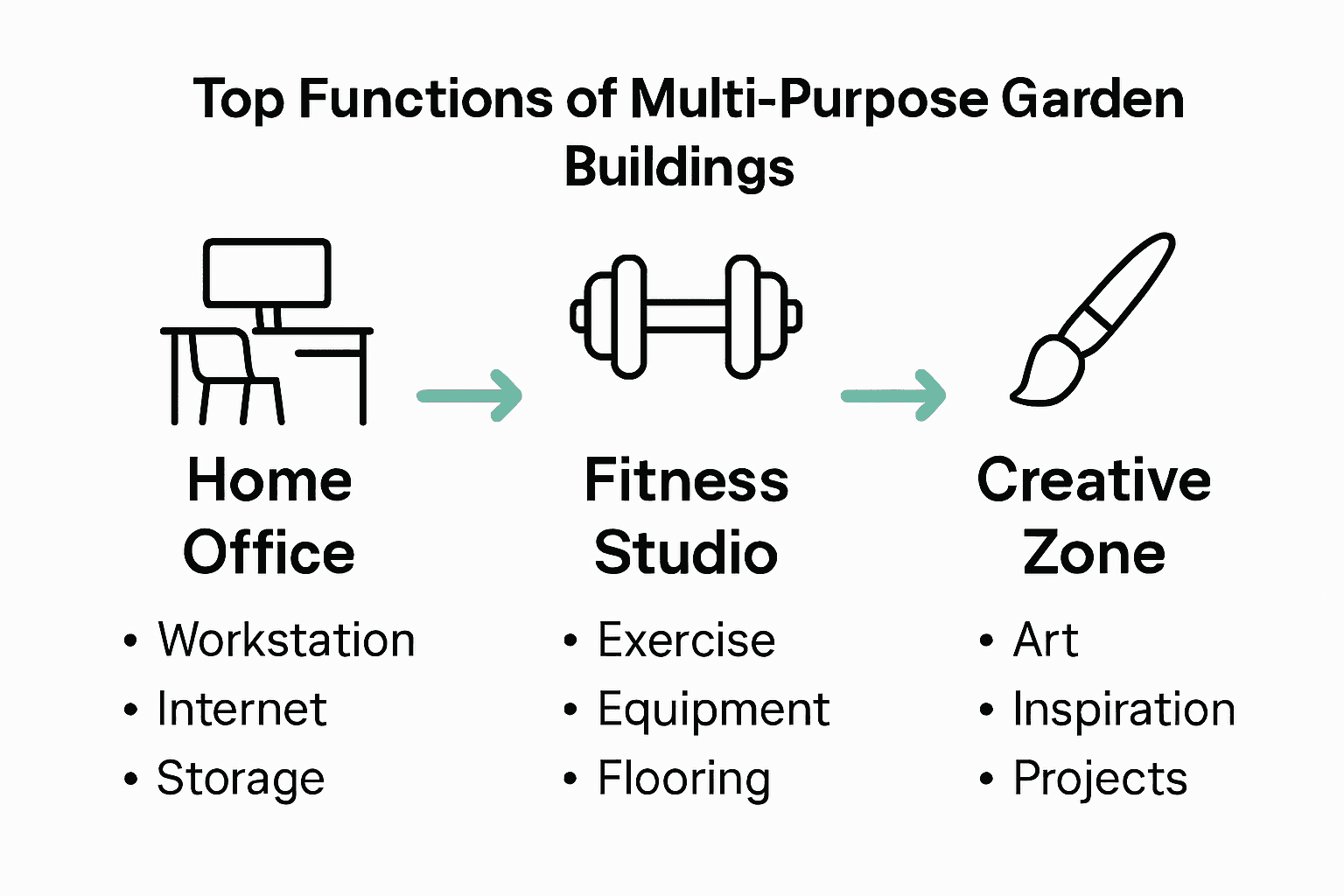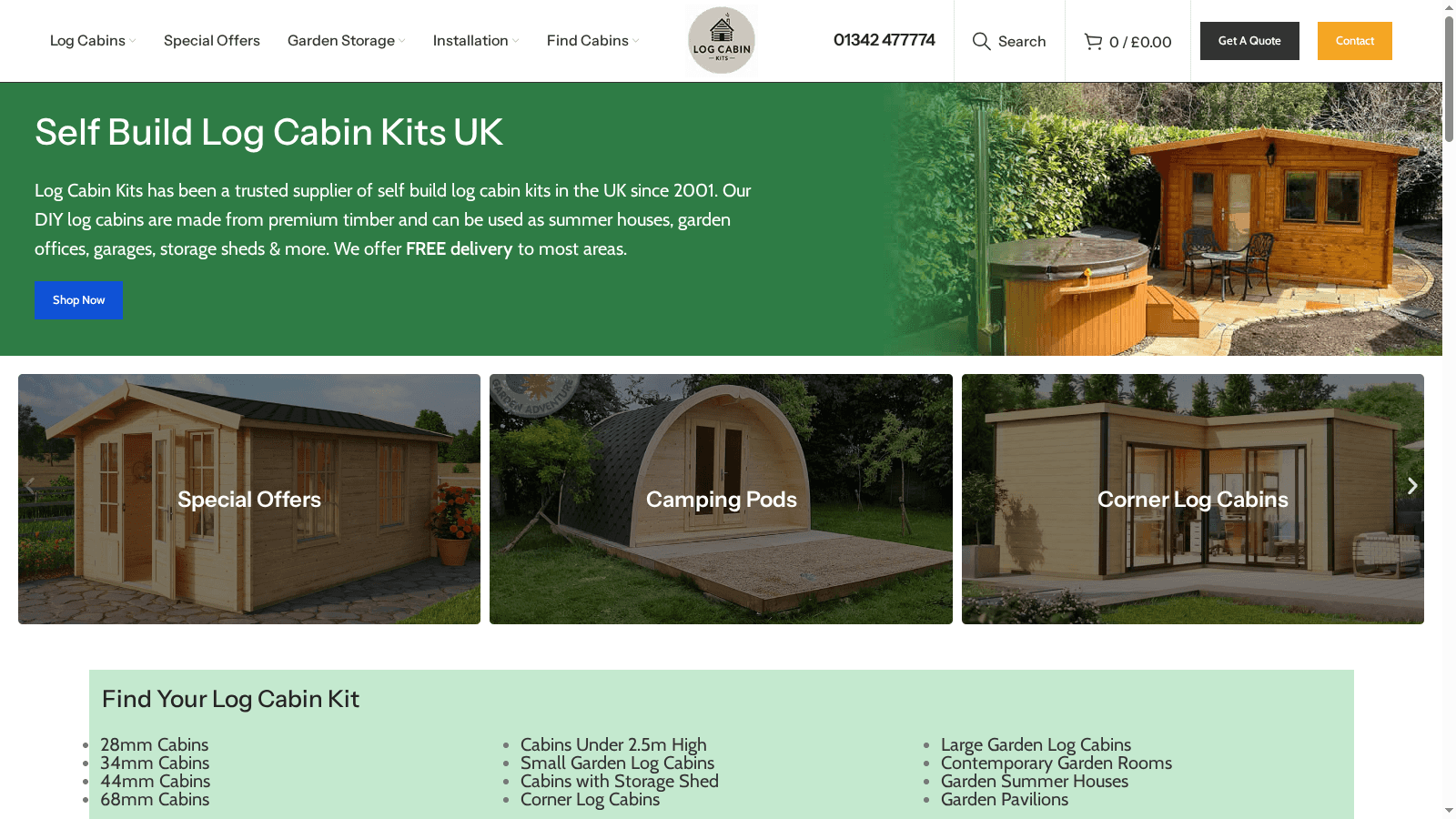Blog
Call Now 01342 477774
Why Build a Multi-Purpose Garden Building? Complete Guide

Nearly half of UK homeowners are now looking for smarter ways to use their outdoor space, and multi-purpose garden buildings are leading the way. These innovative structures effortlessly combine work, leisure, and storage in a single location. With flexible designs and custom features, a multi-purpose garden building can adapt as life changes, adding lasting value and convenience to your home.
Table of Contents
- Defining Multi-Purpose Garden Buildings
- Key Uses And Adaptable Functions
- Types Of Multi-Purpose Garden Buildings
- Essential Features And Customisation Options
- UK Planning Permissions And Legal Guidelines
- Cost Considerations And Common Pitfalls
Key Takeaways
| Point | Details |
|---|---|
| Versatile Utility | Multi-purpose garden buildings are designed to accommodate various functions, enhancing home and garden flexibility. |
| Customisation Options | Homeowners can tailor structural, interior, and technological features to match their lifestyle and preferences. |
| Planning Considerations | Understanding UK planning permissions is essential to avoid legal complications and ensure compliance with regulations. |
| Cost Awareness | Careful financial planning is required to account for total project expenses beyond initial construction costs. |
Defining Multi-Purpose Garden Buildings
A multi-purpose garden building represents a versatile outdoor structure designed to serve numerous functions beyond traditional single-use garden rooms. These adaptable spaces blend practicality with flexibility, allowing homeowners to maximise their garden’s potential through a single, intelligently designed structure.
At its core, a multi-purpose garden building is engineered to accommodate multiple activities and uses simultaneously. Unlike traditional sheds or single-function structures, these buildings can transform seamlessly between different roles. Embracing Efficiency: The Advantages of One Multi-Room Cabin Over Multiple Buildings highlights how these spaces can integrate various functions without compromising on quality or design.
Key characteristics of multi-purpose garden buildings typically include:
- Modular interior design allowing reconfigurable spaces
- Robust construction supporting diverse activities
- Integrated storage and functional zones
- Adaptable layouts that can change with homeowner needs
- High-quality insulation for year-round usability

These buildings represent more than just additional square footage – they’re strategic investments in your property’s functionality and value. Whether you need a home office, workout space, hobby room, or relaxation area, a well-designed multi-purpose garden building can seamlessly accommodate these diverse requirements without cluttering your main living space.
Key Uses and Adaptable Functions
Multi-purpose garden buildings represent incredibly flexible spaces that can transform to meet evolving lifestyle needs. Modern homeowners are increasingly seeking versatile structures that can seamlessly transition between different functions, maximising both utility and comfort.
The Garden Room Guide reveals fascinating insights into how these spaces are being creatively utilised. Garden offices, for instance, are no longer just work spaces but multifunctional environments that can incorporate gym equipment, provide entertainment areas for teenagers, and even include soundproofed zones for music practice.
Common adaptable functions for multi-purpose garden buildings include:
- Home Office: Dedicated workspace with professional setup
- Fitness Studio: Personal gym with equipment storage
- Creative Workshop: Art, craft, or music practice area
- Relaxation Zone: Meditation, reading, or quiet reflection space
- Guest Accommodation: Potential sleeping area with proper building regulations
- Entertainment Room: Social space for family and friends
The true power of these structures lies in their ability to adapt.
Types of Multi-Purpose Garden Buildings
Multi-purpose garden buildings come in a diverse range of architectural styles and configurations, each designed to meet specific homeowner needs while maximising garden space utility. These versatile structures have evolved far beyond traditional garden sheds, offering sophisticated solutions for modern outdoor living.
Multi-Room Garden Cabins: Your Backyard Upgrade highlights the growing trend of modular garden buildings that can be customised to suit individual requirements. The primary types of multi-purpose garden buildings include:
Modular Log Cabins
- Highly adaptable wooden structures
- Easily reconfigurable interior spaces
- Superior insulation for year-round use
- Natural aesthetic complementing garden environments
Contemporary Garden Rooms
- Sleek, minimalist design
- Large glass panels for natural lighting
- Ideal for home offices and creative spaces
- Modern architectural integration
Hybrid Workspace Structures
- Combination of work and leisure zones
- Integrated technology infrastructure
- Soundproofing options
- Flexible furniture and partition systems
The key differentiator among these types lies in their ability to seamlessly blend functionality with aesthetic appeal. Whether you’re seeking a professional workspace, a relaxation retreat, or a multifunctional family area, these garden buildings offer tailored solutions that transform your outdoor space into an extension of your home.
Essential Features and Customisation Options
Multi-purpose garden buildings represent a sophisticated canvas for personal expression, offering an unprecedented range of customisation that transforms standard outdoor structures into highly personalised spaces. The ability to tailor every aspect of these buildings means homeowners can create truly unique environments that reflect individual lifestyle needs and aesthetic preferences.
Customisation Options for Logcabinkits Cabins highlights the extensive personalisation possibilities that modern garden buildings offer. These customisations go far beyond simple aesthetic choices, encompassing structural, functional, and technological adaptations.
Key customisation options include:
Structural Customisations
- Size and Footprint: Flexible dimensions to suit garden layout
- Roof Styles: Choices between flat, pitched, and contemporary designs
- Window Configurations: Custom placement and sizing
- Door Options: Sliding, bifold, or traditional configurations
Interior Customisations
- Modular partition walls
- Built-in storage solutions
- Electrical and networking infrastructure
- Flooring material selections
- Integrated technology mounting points
Technological Enhancements
- Smart home system compatibility
- Integrated heating and cooling
- Enhanced insulation packages
- Solar panel integration
- Advanced security systems
The true magic of multi-purpose garden buildings lies in their ability to evolve with your changing needs.
 What begins as a home office can seamlessly transform into a fitness studio, art workshop, or guest accommodation, making these structures an incredibly intelligent investment in your property’s functionality and value.
What begins as a home office can seamlessly transform into a fitness studio, art workshop, or guest accommodation, making these structures an incredibly intelligent investment in your property’s functionality and value.
UK Planning Permissions and Legal Guidelines
Planning permissions represent a critical consideration for homeowners looking to install multi-purpose garden buildings. Navigating the legal landscape requires careful understanding of specific regulations that govern outdoor structure installations in the UK.
Home Building provides crucial insights into permitted development rights. Most garden rooms can be constructed without formal planning permission, provided they meet specific criteria:
Key Permitted Development Criteria
- Single-storey structure
- Maximum eaves height of 2.5m
- Height not exceeding 2.5m if within 2m of a property boundary
- Cannot be used as self-contained living accommodation
Potential Restrictions and Considerations
- Conservation areas require additional permissions
- Listed properties have stricter regulations
- Total garden building coverage must not exceed permitted land area
- Materials and design must complement existing property
Home Building also highlights important restrictions on usage. While garden buildings offer remarkable flexibility, they cannot typically serve as permanent residential spaces without obtaining specific planning permissions. Homeowners must carefully consider intended use to ensure full compliance with local building regulations and avoid potential legal complications.
Cost Considerations and Common Pitfalls
Multi-purpose garden buildings represent significant investments that require careful financial planning and strategic decision-making. Understanding the nuanced cost landscape is crucial for homeowners looking to create functional and value-adding outdoor spaces without unexpected financial surprises.
Home Building highlights critical cost considerations that often catch homeowners off-guard. Building a garden room involves multiple expense layers beyond the initial construction, including design complexity, material quality, insulation requirements, and potential compliance costs.
Primary Cost Components
- Base construction materials
- Foundation and groundwork
- Electrical and technological infrastructure
- Insulation and climate control systems
- Interior finishing and furnishings
- Potential planning permission fees
Common Financial Pitfalls
- Underestimating total project expenses
- Overlooking ongoing maintenance costs
- Failing to budget for necessary infrastructure upgrades
- Neglecting potential utility connection expenses
- Insufficient contingency funding for unexpected challenges
Home Building additionally warns about potential regulatory expenses that can significantly impact overall project costs. Homeowners must carefully assess not just construction expenses, but also potential compliance investments required to meet building regulations, especially if the garden building will serve complex or intensive functional purposes.
Discover Your Perfect Multi-Purpose Garden Building Today
Are you ready to transform your outdoor space with a versatile garden building that adapts to your lifestyle needs? Many homeowners struggle with limited space and conflicting requirements such as combining a home office, gym, or relaxation area in one smart structure. Our bespoke garden buildings at Log Cabin Kits offer flexible designs with modular interiors and excellent insulation giving you year-round usability without cluttering your home.

Explore our collection to find the ideal multi-purpose garden building that matches your vision. Whether you want a sleek contemporary garden room or a traditional modular log cabin, we can help you create a personalised space tailored to your goals. Do not wait to add value and functionality to your property. Visit Log Cabin Kits now to start designing your dream garden building with custom options perfectly suited to your lifestyle.
Frequently Asked Questions
A multi-purpose garden building offers versatility, allowing homeowners to create spaces for various functions such as a home office, fitness studio, creative workshop, and relaxation zone, all in one structure.
Customization options include selecting structural aspects like size and roof style, interior features such as built-in storage and modular partitions, and technological enhancements like smart home connectivity and integrated heating systems.
Common types include modular log cabins, contemporary garden rooms, and hybrid workspace structures, each designed to cater to different needs while maximizing garden space utility.
Most garden buildings do not require formal planning permission if they meet specific criteria, such as height restrictions and usage limitations. However, certain conditions may apply in conservation areas or for listed properties, so it’s essential to check local regulations.
